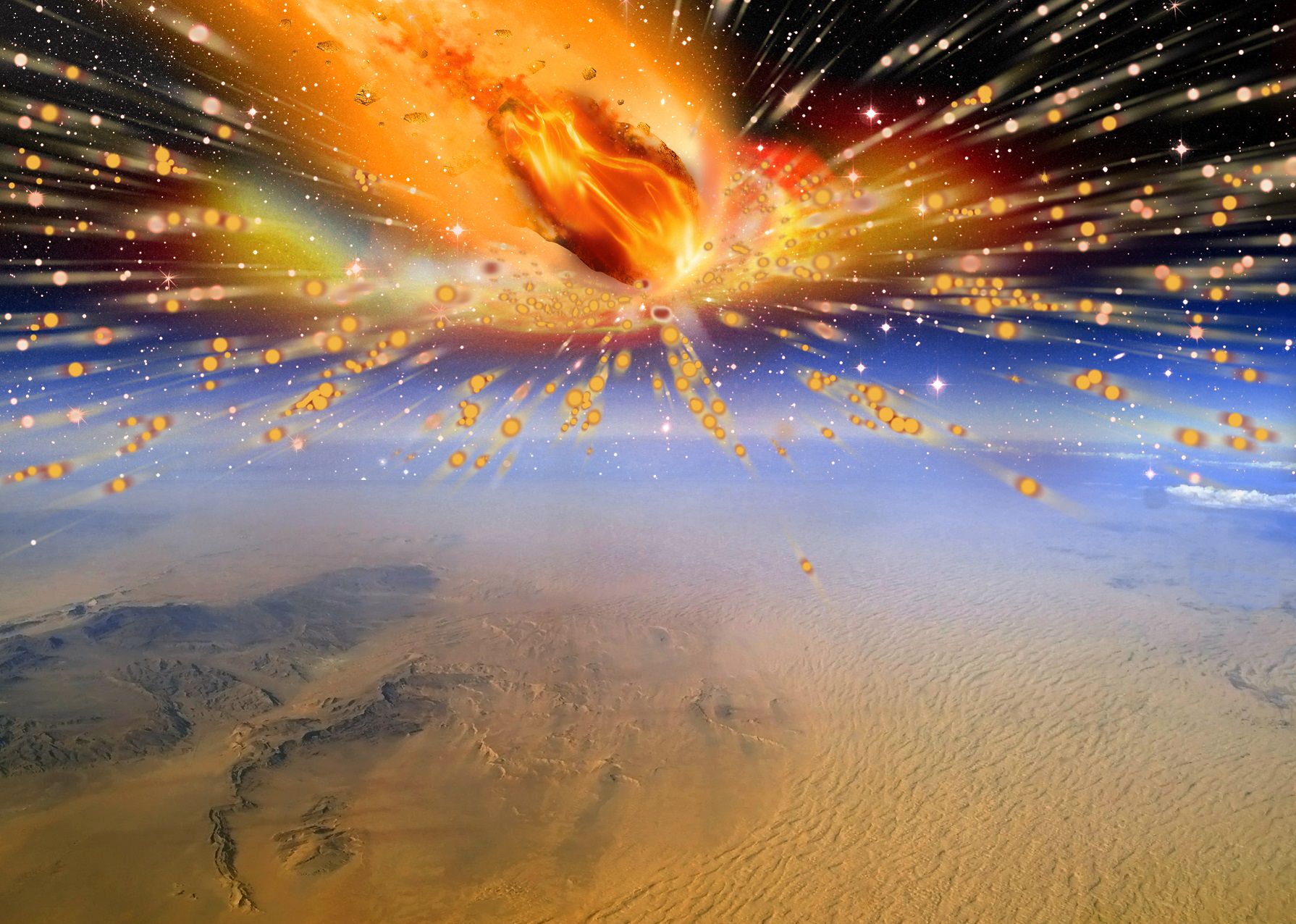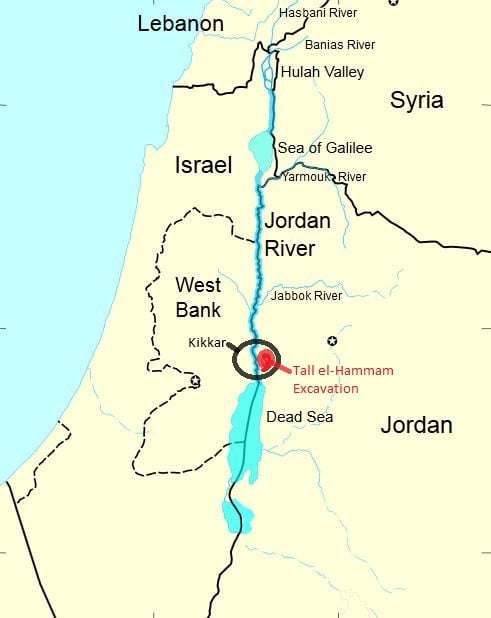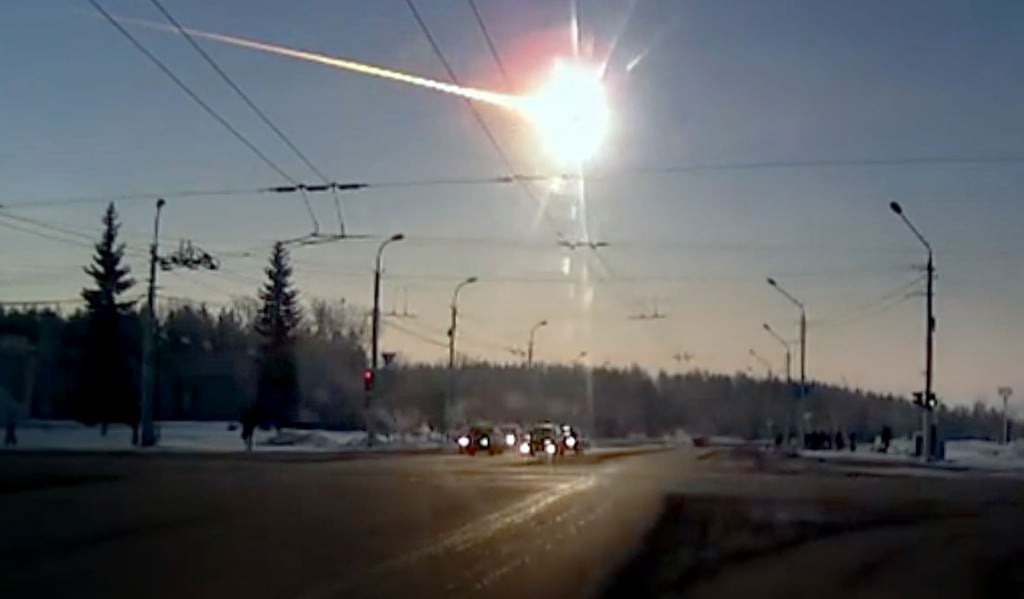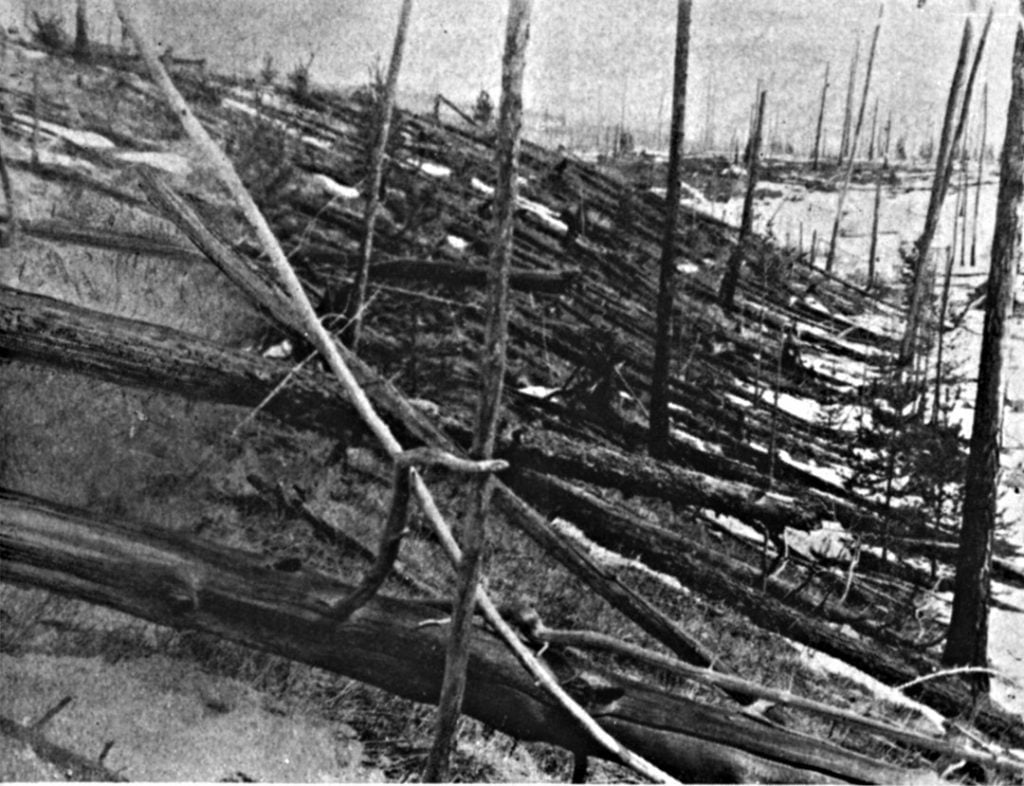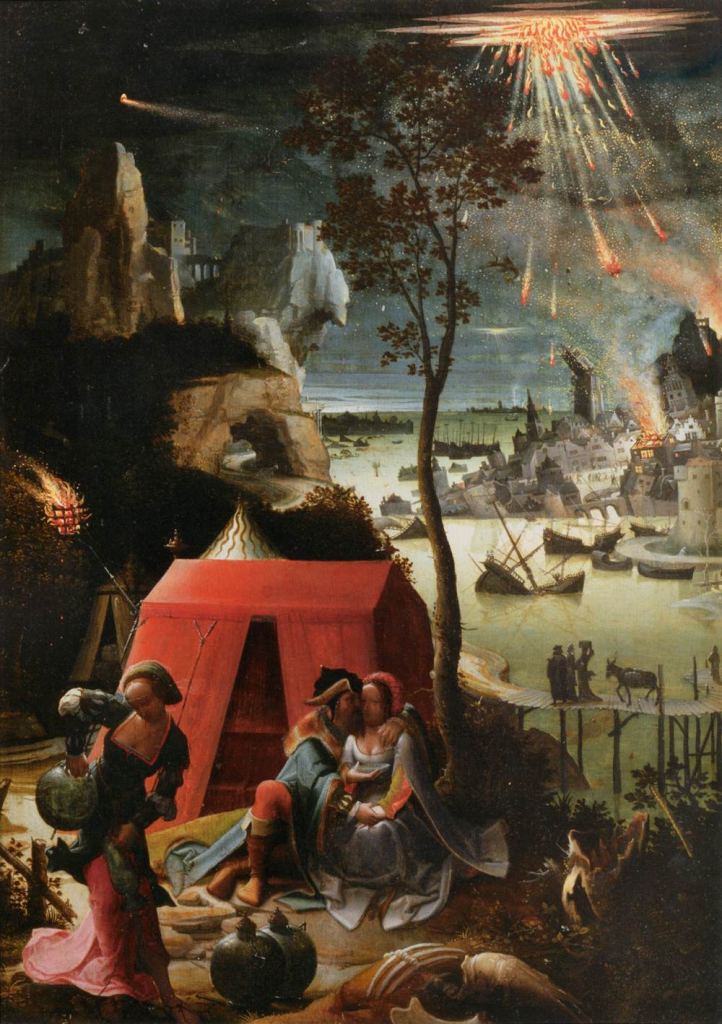A meteor that exploded in the air near the Dead Sea 3,700 years ago may have wiped out communities, killed tens of thousands of people, and provided the kernel of truth to an old Bible story. The area is in modern-day Jordan, in a 25 km wide circular plain called Middle Ghor. Most of the evidence for this event comes from archaeological evidence excavated at the Bronze Age city of Tall el-Hammam located in that area, which some scholars say is the city of Sodom from the Bible.
Archaeologists have been digging at the Tall el-Hamman site for 13 years, and have unearthed some pretty convincing evidence supporting the air-burst idea. The findings were presented on November 15th at the annual meeting of the American Schools of Oriental Research, by archaeologist Phillip Silvia of Trinity Southwest University. They were also published in a paper by Silvia and co-author and archaeologist Steven Collins called
"The Civilization-Ending 3.7KYrBP Event: Archaeological Data, Sample Analyses, and Biblical Implications"
.
[caption id="attachment_140758" align="alignnone" width="491"]
The exploding meteor destroyed the ancient city of Tall el-Hamman in Jordan. Some scholars think that it is the city called Sodom in the Bible. Image: By UN - http://www.un.org/Depts/Cartographic/map/profile/israel.pdf, Public Domain, https://commons.wikimedia.org/w/index.php?curid=47330290[/caption]
Tall el-Hammam was a thriving city state occupying Middle Ghor. The civilization had occupied the area for over 2,500 years. The city itself held the administrative center of the kingdom, and was protected by a perimeter wall up to 30m (100 ft) thick and up to 15m (50 ft.) high, for a linear distance of over 2.5km. The wall held multiple gates, towers, and likely other defensive features. But all that was obliterated when the meteor pierced the atmosphere and exploded over the area.
Evidence gathered at the Tall el-Hammam site tells the story of the event. When the meteor air-burst occurred, there was an intensely hot and powerful shock wave. The shock wave wiped out all settlements in the area and destroyed an area of 500 sq. km. And the area remained uninhabited for a remarkable 700 years after the event. Several lines of evidence support the likelihood of this event.
Silvia and Collins say in their
paper
that the destruction and the damage on walls and other structures in the city is directional, supporting the idea of a shock wave. In the past, archaeologist have wondered if an earthquake could have caused the collapse of the region, but an earthquake would not have caused the type of directional damage that the remaining structures and fortifications display.
[caption id="attachment_109406" align="alignnone" width="525"]
Chelyabinsk fireball recorded by a dashcam from Kamensk-Uralsky north of Chelyabinsk where it was still dawn. A study of the area near this meteor air burst revealed similar signatures to the Tall el_Hammam site. [/caption]
Archaeologists also wondered if an earthquake that caused burning petro-chemical eruptions could have caused the destruction. This burning would have explained the thick layers of ash at Tall el-Hammam, but doesn't explain the "large-scale absence of tumbled mudbrick that would be typical of earthquake damage," according to the paper. Archaeologists have been studying the area for 13 years to uncover more evidence to explain the sudden event, and according to Silvia and Collins, they found it.
A pottery shard was found in the city that had one side melted to glass. Only extreme heat can do that. Examination revealed zircon crystals inside a bubble in the glass which could only have been formed by temperatures over 4000 Celsius. Additionally, the layer of melted clay that turned to glass is only 1 mm, not the entire depth of the shard. This indicates only a short burst of intense heat, rather than long exposure from something like burning petro-chemical eruptions. The research team concluded that the shard was exposed to temperatures between 8,000°C and 12,000°C for less than a few milliseconds. That certainly supports the idea of an airburst.
Researchers at the site also found what's called a "melt rock" weighing over 600 grams. It's an agglomeration of three different rocks melted together by extreme heat and covered with a layer of glass. This also contained zirconium crystals, and further analysis of the melt rock concluded that it had probably been exposed to 12,000 degree Celsius temperatures for a few seconds.
The final piece of evidence concerns what happened to the Tall el-Hammam area after the destruction. This region is considered the best-watered agricultural area in the region, yet after the Tall el-Hammam city-state was destroyed, the area remained unoccupied for about 700 years. What could have caused this, if the extreme heat from the air burst lasted only a few seconds?
The answer lies in the soil, according to the researchers. Six samples from above, through, and below the soil layer from the time of the event were analyzed geochemically. The results showed "salt and sulfate levels > 6% (60,000 ppm) in the ash layer and > 5% (50,000 ppm) in the soil layers immediately above and below the ash layer," according to the paper. The source of these contaminants had to be the Dead Sea, which borders the Middle Ghor area.
[caption id="attachment_132308" align="alignnone" width="525"]
This photo shows trees felled from a powerful aerial meteorite explosion. It was taken during Leonid Kulik's 1929 expedition to the Tunguska impact event in Siberia in 1908. The Tunguska site, the Chelyabinsk site, and the Tall el_Hammam site all show the same evidence of a meteor air burst. Credit: Kulik Expedition[/caption]
The two scientists say that the massive shockwave and heat wave not only destroyed the settlements, but the shock wave deposited a layer of salts onto the top soil, destroying it and making it unable to support agriculture for hundreds of years. It only takes a salt content of 12,800 ppm to prevent wheat from germinating, and a salt content of 17,900 ppm to prevent barley from growing. Those thresholds were easily exceeded.
There is other evidence that supports the air burst theory behind Tall el-Hammam. Meteor air burst sites like
Chelyabinsk
and
Tunguska
have the same signatures of meteor air burst that Tall el-Hammam has. These include high levels of platinum, a high incidence of magnetic spherules, and also a high incidence of what are known as
scoria-like objects
(SLOs).
The researchers concluded that an airburst with a yield equivalent to a 10 mt nuclear warhead occurred about 1 km above northeast corner of the Dead Sea. They say this adequately explains all of the evidence gathered at Tall el-Hammam.
"Then the Lord rained down burning sulfur on Sodom and Gomorrah—from the Lord out of the heavens. 25 Thus he overthrew those cities and the entire plain, destroying all those living in the cities—and also the vegetation in the land." - Genesis 19:24-25
Some scholars think that Tall el-Hamman is the city of Sodom from the Bible. That idea has been around for a long time. It's in the right place, and a meteor air burst would certainly explain the Genesis quote. It's interesting that the Genesis quote mentions sulfur specifically, since a layer of sulfates and salt was deposited on the area by the event, destroying "the vegetation in the land." But not all agree.
[caption id="attachment_140765" align="alignnone" width="525"]
The painting "Lot and his Daughters" by Lucan van Leyden (1520) shows the cities of Sodom and Gomorrah being destroyed in the background. Image Credit: By Lucas van Leyden - Web Gallery of Art: Image Info about artwork, Public Domain, https://commons.wikimedia.org/w/index.php?curid=15395506[/caption]
Some scholars think that the
geography is not correct
. Others think the timeline is wrong. But with this new study, both sides will have to reconsider the whole issue.
The Bible is interesting from a historical perspective, because it sometimes interweaves actual events from history with the Christian mythology. Now that it seems reasonable that a meteor airburst did destroy the area that may have contained Sodom, we can lay to rest the idea that the Christian God sent down fireballs to punish homosexuality. It looks like once again, it was a perfectly natural event that led to an apocalyptic, mythological story, and that what people once attributed to Gods and Goddesses is just nature.
Sources:
- Research Paper: The Civilization-Ending 3.7KYrBP Event: Archaeological Data, Sample Analyses, and Biblical Implications
- Biblegateway.com
- Bible History Daily
- Science News: An exploding meteor may have wiped out ancient Dead Sea communities
- Tall El-Hammam Research Site: Discoveries
- Wikipedia: Sodom and Gomorrah
 Universe Today
Universe Today
